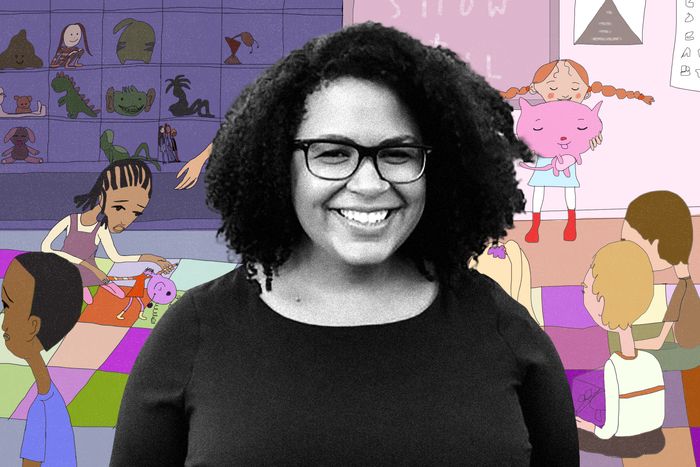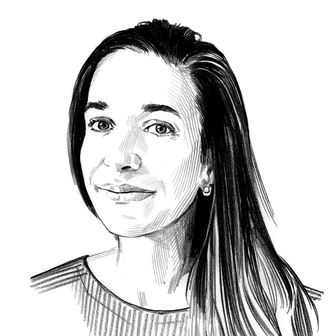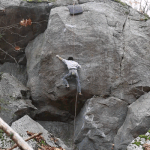
This article originally appeared in Brooding, a newsletter delivering deep thoughts on modern family life. Sign up here.
I started my master’s degree in sociology when both of my kids were in day care (which I could afford as a broke graduate student thanks to a wonderful $9-per-day program in Quebec), and one of the early assignments was to conduct a mini-field-study in the location of our choice. I chose the day-care cloakroom, which was, at the time, the most fraught and intense place I knew. My mini-study concluded that the cloakroom is one of the first places where parents must behave like parents in close proximity to other parents, which can be stressful. In this space, I argued, we learn to perform parenthood in public. I could have spent way longer on that assignment. Day care is a petri dish for social information — not just for germs!
So it was partly for this reason that I was very excited to read Dr. Casey Stockstill’s new book, False Starts: The Segregated World of Preschoolers (NYU Press). Stockstill tells us that preschools are the most segregated school environments that children are likely to ever experience. When you consider how integration in K-12 schools is a long-standing political issue, it’s interesting to note that preschool segregation is, as Stockstill puts it, a “black box.” Its causes are many, but underexamined.
Stockstill suspects that, on top of the predictable dual factors of residential segregation and people looking for child care near their homes, there’s the fact that many middle-class families can’t afford preschool at all. There are subsidies for low-income families, and wealthy families will pay for private care, but middle-income families are often priced out. This makes class inequality in preschools much sharper, which might translate into racial segregation too.
This is not the research project Stockstill began with. It started as her doctoral dissertation, and she was intending to study how kids form racial identity and how kids of color begin to be socialized at a young age. Her study took place at a Head Start in Madison, Wisconsin, which was attended by predominantly kids of color. She was motivated by a critique from scholars of color that sociology starts with white middle-class people’s social experience, taking them as the norm, with everyone else’s experience being an aberration.
At the suggestion of her doctoral supervisor, she visited another preschool across town to gather some comparative data: Great Beginnings, frequented by middle- and upper-middle-class families, mostly white. (It can be easier to draw conclusions from a comparative study than a big open-ended one, and Stockstill was pregnant with her first child and eager to wrap up her research, which is a circumstance to which I can profoundly relate.)
She was immediately struck by the differences she observed at Great Beginnings — differences that structured preschoolers’ relationships with their caregivers, and by extension, their first relationships with institutional learning. This surprised her, because both preschools operated according to the same basic standards, with the same types of classrooms, filled with the same sorts of toys, and following the same daily routines. The quality of care at one is not “better” than the other. But because the kids at Head Start are affected by more structural inequality — poverty but also its attendant life-altering consequences like eviction and the incarceration of family members — they show up to preschool dealing with those experiences, often through behavior that disrupts the group’s routines.
Stockstill illustrates the impact of these disruptions with simple, striking evidence. While the Head Start caregivers manage kids who struggle to fall in line with the classroom’s routines, they lose precious minutes in the day. Meanwhile, the Great Beginnings caregivers use those minutes to read aloud to the kids. Over time, the Great Beginnings kids are read to exponentially more than the Head Start kids, simply because of the aggregation of a few lost minutes throughout the day. They get more practice at sitting still and listening; they get to feel the quiet more, and to bathe in that intimate joy of being read to.
One of the many great things about Stockstill’s book is that she researched it by getting on the preschoolers’ level, deliberately staying away from any teacherlike helping roles. She joined kids in their games and sat with them for their meals. After a while, they came to trust her as one of their own, allowing her to observe the way they act when they think no adults are looking. The details she captures are a delight to read, even when they’re illustrating inequity that is stunning to contemplate. Kids are so cool.
I was eager to speak with Stockstill about what she observed in the two preschools, and about her own perspective as a parent of young children. She is an assistant professor of sociology at Dartmouth College. She lives in Concord, New Hampshire, and has three children ages 7, 4, and 1. We spoke over Zoom, and our conversation has been edited.
What are some of the consequences of having preschool be so segregated?
The challenging question I get asked is the opposite of yours. It’s: Who cares if they’re segregated? Maybe they can still be good classrooms? Is it really such a big deal? Especially with race, because I think there’s a perspective among white parents in particular that, like, “My kids won’t know about race for a few more years; I can wait till they’re older before the specter of race and racism in the U.S. is revealed to them.” So I think we have a kind of exceptionalist way of thinking about preschool, like the rules don’t apply, even though research on the influence and importance of early-childhood education says they pretty much do.
The consequences are that we sell poor children of color short. We ask the teachers and the kids to be in a space where there’s a much higher prevalence of challenging behavior. Think of it as the fallout of poverty and structural racism. There are practical consequences in how kids are spending their time, how they’re able to play with their friends. How close they’re able to get to their teachers. And then I also want to underscore that there are costs for the affluent white children too. I think parents kid themselves that there isn’t. The affluent kids miss out on an opportunity to have a broader range of behavioral repertoires, to know how to get along with different kinds of people. Because from what I’m seeing, even when it comes to how the kids are playing a game of house, they’re doing it differently.
Right. You describe the way that kids play make-believe at Great Beginnings as being a movie with many little directors. They’re forever planning the scenario — who is going to do what, who is going to say what. This happens as much as the make-believe itself. Meanwhile, the make-believe at Head Start is like watching an improv troupe. They just jump right into it — kids join, they leave, the game keeps moving. It seems to reflect the difference in autonomy that the two groups experience. The Great Beginnings kids are used to a lot more teacher contact; the teachers are talking to them constantly, commenting on their games, just nonstop check-ins. At Head Start, if kids aren’t in the midst of a conflict during free playtime, they’re left alone. The caregivers are often busy either doing paperwork or managing kids who are having a hard time. It feels like the Head Start kids get more practice with autonomy, and the Great Beginnings kids get more practice fitting into an institutional setting with lots of adult feedback, and those opportunities don’t really cross over from one preschool to the other.
Another big difference you describe is the kids’ relationships with the toys they bring from home.
So the rule at Head Start is that toys from home must be kept in your cubby or in your pocket. I started to notice this pattern of some of the kids sneaking in toys. Over time I saw that it’s mostly boys of color who are doing this. What does that do for them, when they’re able to sneak a toy in and enjoy it? It’s something kids can control, when so much around them is controlled by adults. When they’re playing with a toy, they’re exerting their own control.
I wrote a lot about a boy I called Julian, who repeatedly snuck in an Iron Man toy. It was a way for him to personalize the environment. His toy was a special thing he valued. Getting to talk about that with peers and teachers was important to him. So he gets some of those moments at first, but the teachers slowly crack down more and more on making sure that kids can’t bring personal stuff at all.
The teachers have good reasons for this — kids’ stuff could get lost. It could get broken. They worried a lot about the families who had very little possessions or didn’t have anything really, right? So the rule is, everyone just checks their stuff at the door. They take the toys away, they say we’re going to put them in your cubby. When that doesn’t really work, they put them in a “teacher bin” and give the toys back at the end of the day.
So Julian developed a practice of sneaking things, and he got good at hiding stuff from his teacher’s gaze. And that worries me when you think about preschool as a school-readiness program. What is this teaching kids to be ready to do? It’s teaching him that my teachers don’t support me having these special personal things, so I need to sneak them.
And Great Beginnings is totally different.
Yeah, it was a scene of celebrating personal property. That’s my take on how they did show-and-tell. It was also a chance for the kids to practice talking in front of their peers. They do a little mini-presentation about their toy. What was also important is that they could take it with them through playtime, so there’s this overlap between home and school.
It makes kids feel more comfortable in a school environment, like, this is a place where I belong.
You know, there’s good sociological literature on elementary school and the entitlement that middle-class kids bring to interactions with adults, by Jessica Calarco, about hand-raising and interrupting. It’s a great sociological case, because individual parents, especially middle-class parents, do coach their kids to advocate for themselves. And when you say it like that, it’s like, yeah! That’s positive! Advocate for your needs, you know? But it becomes a group problem if you have a class of 30 kids who constantly raise their hand and want to take the floor on something. The class wouldn’t learn and the group wouldn’t move forward. I see this as a college professor. I tell my students about this explicitly! It comes up when they ask me to bump their grades.
What’s your experience of parenting at this phase of your family’s life?
I’m always trying to separate Instagram parenting from the real human beings in my life. I’ve always wanted to resist concerted cultivation for my kids. I was really opinionated about it when my kids were younger. I was like, how can I make sure that when my kid is 10 I’m not chauffeuring him to soccer, piano, karate. But the feeling among many parents in my life is: You are selfish if you can do all that and you choose not to.
I think the culture on Instagram and among parents I know is that we should sacrifice ourselves — that we should give everything we can. My approach is that my family is a system and we all have needs. Sometimes one person will win a little bit, but it’s not going to throw all of us off. But some of the parents around me? It’s like, kid, kid, kid, to the point of harming community.
Can you elaborate on the Instagram parenting you’re referring to?
I worry about “trauma” becoming a parenting-influencer buzzword. I’ve been through objective adverse childhood experiences, so I could be a person who could heavily lean into this. I could say, Oh my God, I’ve been through trauma, it’s a generational curse. I have to manage my trauma. But some influencers have co-opted real research on trauma and epigenetics to tell parents — who did not experience war or genocide, or racism, or the chronic stress of poverty — that in early childhood they must manage their emotions and their kids’ emotions, or else they will wreck their kids. And to learn how to avoid wrecking their kids, they can buy a convenient e-course!
I reject that for myself. I parent with love and instinct, and within reason. I do not need scripts and e-courses to add to narratives of mom guilt.
For your own children, what would your ideal preschool look like?
If someone let me pick between the schools in this book for my kids, I’d pick Head Start. My kids have mostly attended Great Beginnings–type preschools. My ideal preschool is integrated by social class, with half kids of color, which would give my child the chance for those interactions and opportunities that they’d miss at a place like Great Beginnings.
The way that many preschools engage with families is an amenities-focused approach — let’s invite the parents to have snow cones in the parking lot! I prefer a community-focused approach. We need to connect with each other. I’d love to see a genuine understanding that families are in the same village with shared interests.
More From This Newsletter
- The 10 Most-Read ‘Brooding’ Columns in 2023
- How Much Nostalgia for the Holidays Should We Have?
- Why Does the Internet Tell Us to ‘Raise Good Humans’?





